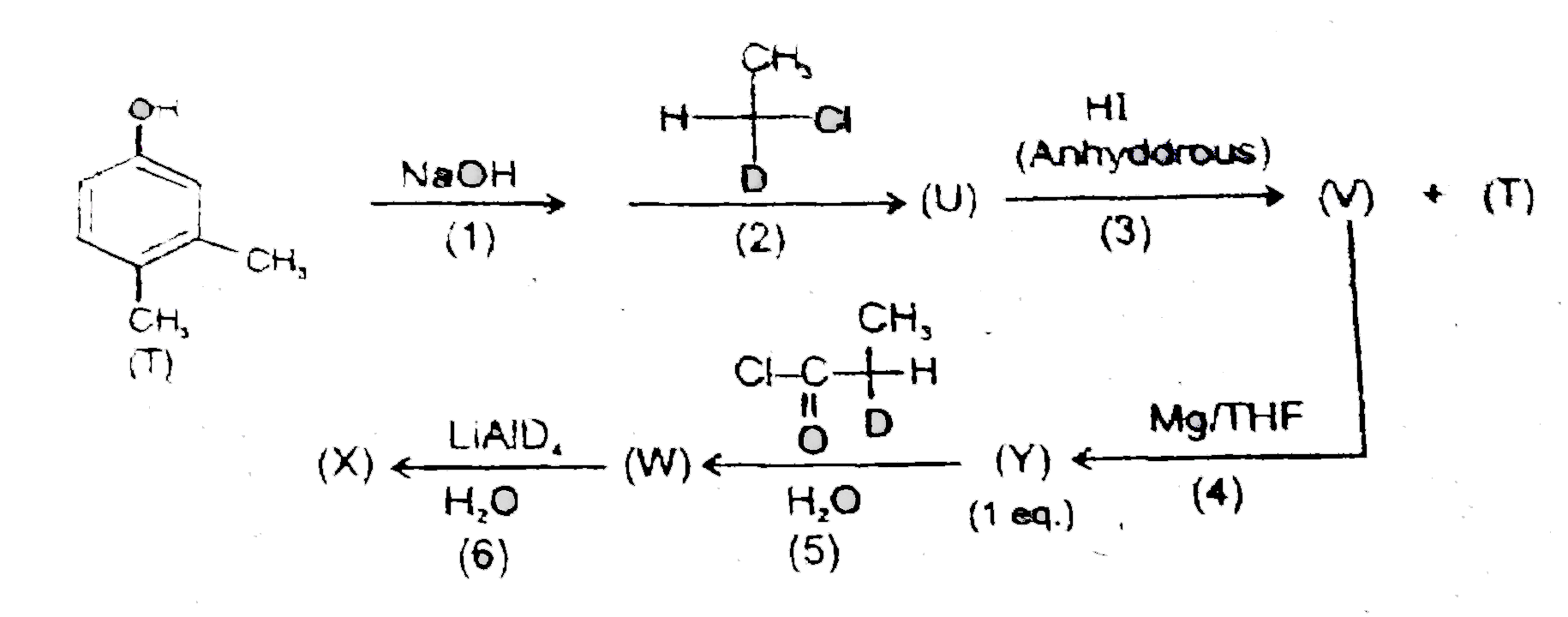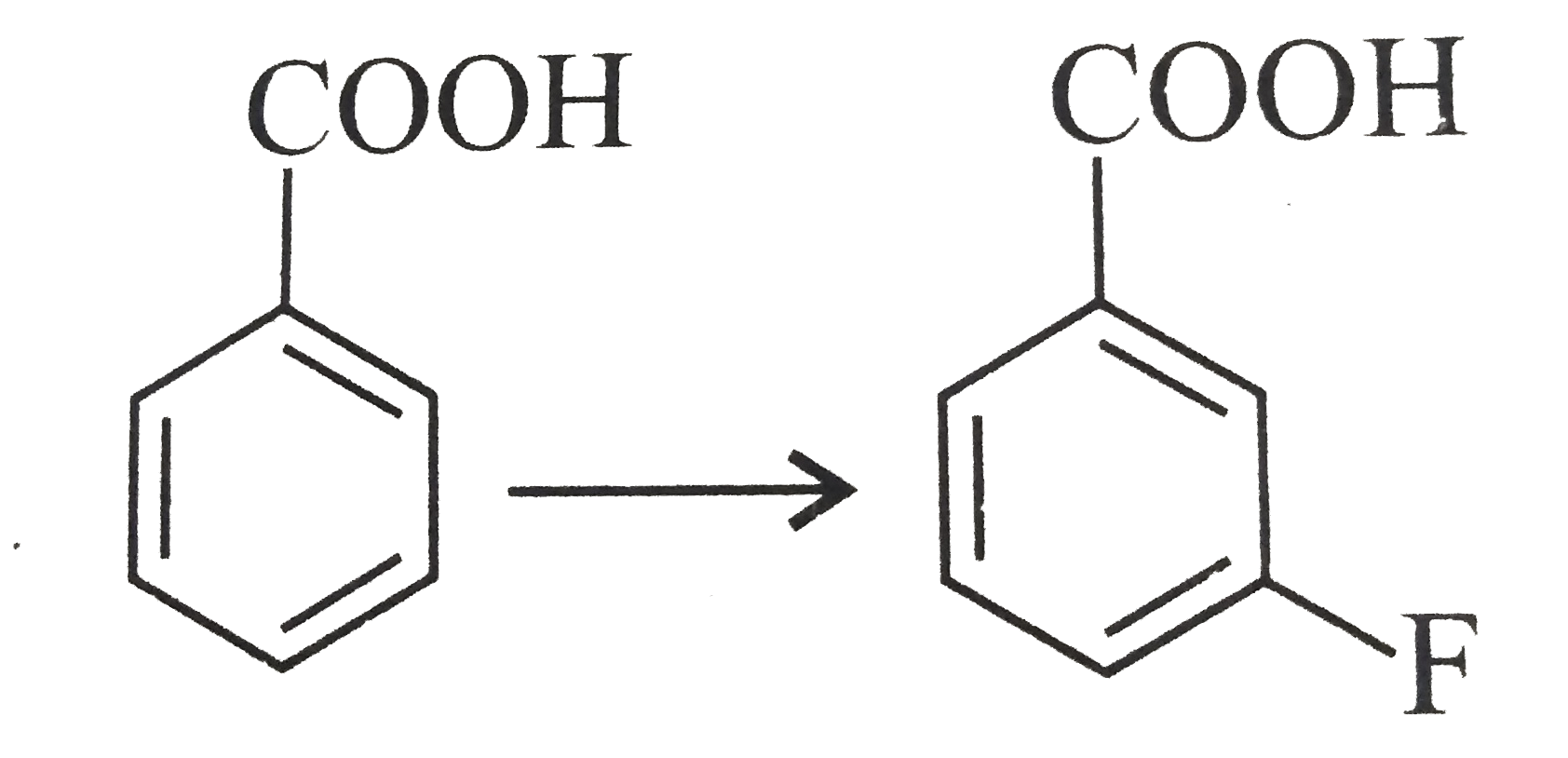Outline the reaction sequence for the conversion of methanal to ethanal (the number of steps should not be more than three).
To convert methanal (formaldehyde) to ethanal (acetaldehyde), we can follow a simple three-step reaction sequence. Here’s how it can be done:
Step 1: Formation of the Grignard Reagent
1. React methanal with methyl magnesium bromide (CH3MgBr) in dry ether.
- Reaction:
HCHO+CH3MgBr→CH3CH2OMgBr
- Here, the nucleophilic methyl group from the Grignard reagent attacks the electrophilic carbon of methanal, forming an alkoxide intermediate.
Step 2: Hydrolysis
2. Hydrolyze the alkoxide intermediate by treating it with water (H2O) or dilute acid (H+).
- Reaction:
CH3CH2OMgBr+H2O→CH3CH2OH+Mg(OH)Br
- This step converts the alkoxide into a primary alcohol, which in this case is ethanol.
Step 3: Oxidation
3. Oxidize ethanol to ethanal using an oxidizing agent like PCC (Pyridinium chlorochromate).
- Reaction:
CH3CH2OHPCC−−−→CH3CHO
- This step converts the primary alcohol (ethanol) into the corresponding aldehyde (ethanal).
Final Reaction Sequence
- Methanal (HCHO) → Methyl magnesium bromide (CH3MgBr) → Ethanol (CH3CH2OH) → Ethanal (CH3CHO)
Summary
1. Grignard Reaction: HCHO + CH3MgBr → CH3CH2OMgBr
2. Hydrolysis: CH3CH2OMgBr + H2O → CH3CH2OH + Mg(OH)Br
3. Oxidation: CH3CH2OH → CH3CHO (using PCC)
1. React methanal with methyl magnesium bromide (CH3MgBr) in dry ether.
- Reaction:
HCHO+CH3MgBr→CH3CH2OMgBr
- Here, the nucleophilic methyl group from the Grignard reagent attacks the electrophilic carbon of methanal, forming an alkoxide intermediate.
2. Hydrolyze the alkoxide intermediate by treating it with water (H2O) or dilute acid (H+).
- Reaction:
CH3CH2OMgBr+H2O→CH3CH2OH+Mg(OH)Br
- This step converts the alkoxide into a primary alcohol, which in this case is ethanol.
3. Oxidize ethanol to ethanal using an oxidizing agent like PCC (Pyridinium chlorochromate).
- Reaction:
CH3CH2OHPCC−−−→CH3CHO
- This step converts the primary alcohol (ethanol) into the corresponding aldehyde (ethanal).
- Methanal (HCHO) → Methyl magnesium bromide (CH3MgBr) → Ethanol (CH3CH2OH) → Ethanal (CH3CHO)
1. Grignard Reaction: HCHO + CH3MgBr → CH3CH2OMgBr
2. Hydrolysis: CH3CH2OMgBr + H2O → CH3CH2OH + Mg(OH)Br
3. Oxidation: CH3CH2OH → CH3CHO (using PCC)
Topper's Solved these Questions
- BOOK - VMC MODULES ENGLISHCHAPTER - ALDEHYDES,KETONES & CARBOXYLIC ACIDS EXERCISE - EXAMPLE 119videos
ALDEHYDES,KETONES & CARBOXYLIC ACIDS
- BOOK - VMC MODULES ENGLISHCHAPTER - ALDEHYDES,KETONES & CARBOXYLIC ACIDS EXERCISE - IN-CHAPTER EXERCISE-A10videos
ALDEHYDES,KETONES & CARBOXYLIC ACIDS
- BOOK - VMC MODULES ENGLISHCHAPTER - ALCOHOLS, PHENOLS & ETHERSEXERCISE - Impeccable100videos
ALCOHOLS, PHENOLS & ETHERS
- BOOK - VMC MODULES ENGLISHCHAPTER - AMINESEXERCISE - IN CHAPTER EXERCISE H10videos
AMINES
Similar Questions
Outline the reaction sequence of the conversion of ethene to ethyne (the number of steps should not be more than two).
View SolutionConversion of Methane into ethane
View SolutionWrite the reactions for the conversion of ethene to ethane
View SolutionThe number of steps in a food chain can never be more than
View SolutionExplain the conversion of acetic acid into methane and ethane in separate steps.
View SolutionConversion of
 ( in not more than four steps )View Solution
( in not more than four steps )View Solution
Observe the following reaction sequence carefully.Find the total number of stereoisomers formed in step (6)View SolutionState the condition/s required for the following conversion reactions to take placer's
Ethane to monochloroethane.View SolutionConvert the following (in not more than three steps):
 .View Solution
.View SolutionThe best sequence of reactions for the following conversion is
 View Solution
View Solution

